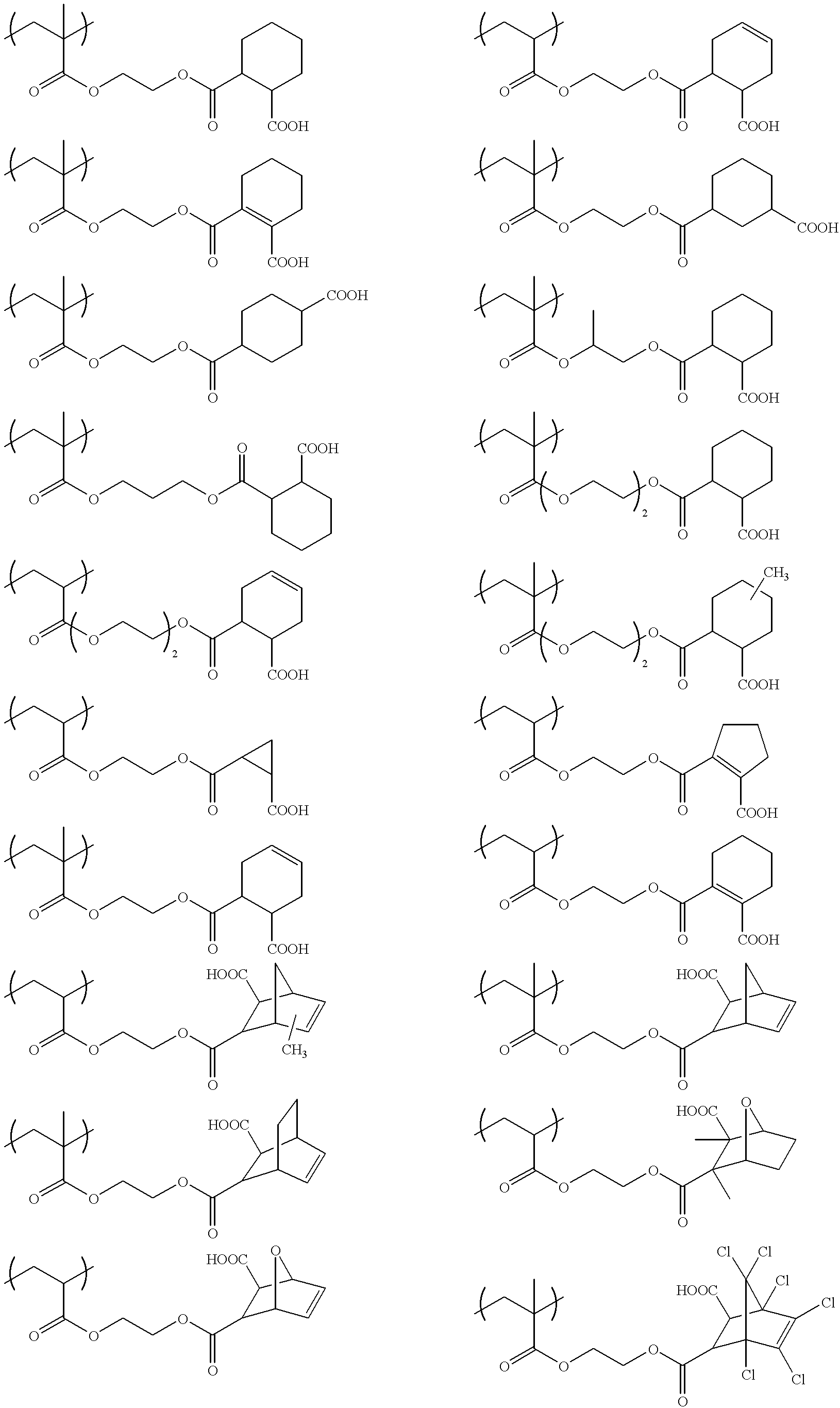Negative working photosensitive lithographic printing plate
a lithographic printing plate and negative technology, applied in the field of negative working photosensitive lithographic printing plate, can solve the problems of insufficient cure of exposed areas, inability to achieve high printing durability (i.e., high press life), and difficulty in further improvement of productivity, etc., to achieve high productivity, high printing durability, and low irradiation energy per unit area
- Summary
- Abstract
- Description
- Claims
- Application Information
AI Technical Summary
Benefits of technology
Problems solved by technology
Method used
Image
Examples
synthesis example 1
To acetone (1,000 mL) were added cis-1,2-cyclohexanedicarboxylic anhydride (308.3 g), 2-hydroxyethyl methacrylate (273.3 g), and 4-dimethylaminopyridine (4.9 g). This mixture was heated with refluxing for 5 hours, and the acetone was distilled off under reduced pressure. Thereafter, 1N hydrochloric acid (500 mL) and ethyl acetate (2,000 mL) were added to the residue to extract it. The resulting organic phase was washed twice with saturated aqueous sodium chloride solution (500 mL), and anhydrous magnesium sulfate (100 g) was then added thereto. This mixture was allowed to stand for 1 hour to dehydrate the organic phase. Subsequently, the magnesium sulfate was removed by filtration and the ethyl acetate was distilled off under reduced pressure to obtain a white solid. The solid was pulverized and then added to water (2,000 mL). After this mixture was stirred for 2 hours, the particles were taken out by filtration and dried. As a result, 2-[2-(methacryloyloxy)ethoxy-carbonyl]cyclohexa...
synthesis example 2
A solution of allyl methacrylate (35.8 g), the 2-[2-(methacryloyloxy)ethoxycarbonyl]cyclohexanecarboxylic acid (33.0 g) obtained in Synthesis Example 1, and 2,2′-azobis(2,4-dimethylvaleronitrile) (0.99 g) added in propylene glycol monomethyl ether (310 g) was added dropwise to propylene glycol monomethyl ether (310° C.) at 70° C. over 2.5 hours in a nitrogen stream. After completion of the addition, the resulting mixture was stirred at 70° C. for further 2 hours and then allowed to cool. This solution was poured into water (4,000 mL) kept being vigorously agitated, and the resulting mixture was stirred for further 1 hour. The white particles thus precipitated were taken out by filtration and dried. As a result, the binder polymer (P-1) (66.8 g) shown in Table 1 was obtained. The weight-average molecular weight of this polymer was measured by gel permeation chromatography and found to be 46,000 as calculated in terms of polystyrene. This polymer had an acid value of 1.72 meq / g.
In the...
PUM
| Property | Measurement | Unit |
|---|---|---|
| Wavelength | aaaaa | aaaaa |
| Fraction | aaaaa | aaaaa |
| Fraction | aaaaa | aaaaa |
Abstract
Description
Claims
Application Information
 Login to View More
Login to View More - R&D
- Intellectual Property
- Life Sciences
- Materials
- Tech Scout
- Unparalleled Data Quality
- Higher Quality Content
- 60% Fewer Hallucinations
Browse by: Latest US Patents, China's latest patents, Technical Efficacy Thesaurus, Application Domain, Technology Topic, Popular Technical Reports.
© 2025 PatSnap. All rights reserved.Legal|Privacy policy|Modern Slavery Act Transparency Statement|Sitemap|About US| Contact US: help@patsnap.com



